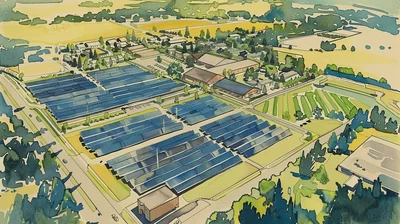This is the fourth article in a series of articles on growing your own tomatoes. Previous articles have discussed choosing the correct varieties of tomatoes, starting your own tomatoes from seed and transplanting your tomatoes to the garden or containers. This article is a final decision one needs to make in growing the perfect tomatoes.
Tomato gardeners do not always agree on whether or not to stake their tomatoes. Staking tomatoes is the preferred method where space is limited. Staked tomatoes yield a much higher proportion of clean, undamaged fruit as the stakes keep the vines and tomatoes off the ground. Many gardeners feel there is an earlier harvest time for the tomatoes, and they are larger and are easier to pick.
Many gardeners use wooden stakes (about two inches in diameter) as the support for tomato plants. Wooden stakes are preferred over bamboo, which many times are not as sturdy. Metal stakes are more expensive and more difficult to put in the ground. These supports should be sturdy and 40-72 inches tall. Use a short height for determinate varieties (tomatoes ripen over three to four weeks on bushy vines) and taller ones for indeterminate varieties (produce a main crop that ripens all at once on taller vines).
One disadvantage to staking is it takes more effort and time to stake. It also takes strength and effort to pound the wooden stakes into the ground. The stakes should be driven about a foot in the ground. You want to put the stakes in before you transplant the tomato plant so as not to damage it when staking. Sometimes the total yield of tomatoes is many times lower. Tomatoes are more susceptible to crackling, blossom end rot and sunscald problems than grown on the ground.
Another way to support plants is with cages. These cages come in various sizes, shapes and mess wire. Advantages of cages include less time for removing suckers (laterals) on the plant, having to tie the plants to the stake, and also allows the plants to grow naturally and support themselves. The plants develop enough foliage to provide plenty of shade for ripening tomatoes, and shaded soil underneath the plants retain more moisture.
The main disadvantage to caging is the cost of the cages, which is generally more than the cost of wooden stakes. But you can use cages year after year and wooden stakes will rot after a couple of years.
A new trend is growing tomatoes is in containers. This is perfect if you have limited space. You need a sunny location with at least eight hours of sun, and an adequate size container. The container should be at least a five-gallon size. If planting tall tomatoes, you will need to stake or cage.
Cherry tomatoes do well in a container or a hanging basket. You do not need to cage or stake cherry tomatoes. There are hanging baskets with holes in the side to plant tomatoes that make an attractive display. There are even plastic bag containers with a hole in the bottom to plant a tomato plant upside down.
If not staking or caging, you need to mulch tomatoes growing in the ground. For many, gardeners’ straw is the preferred mulch.







